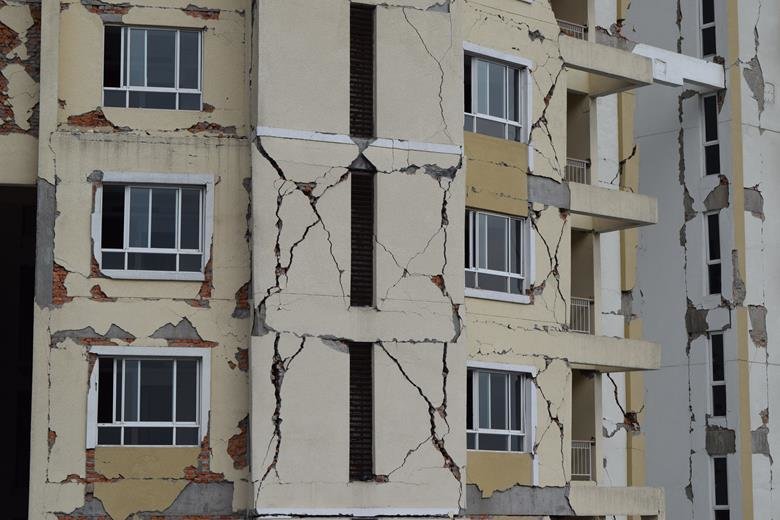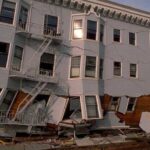Structural damages come under two major categories:
1. Large Scale damage to structures. These are typically caused due to some other primary disaster –
2. Earthquakes
3. Volcanoes
4. Flooding
5. Tornadoes
6. Tsunamis
7. These are the “real” disasters – due to the number of lives involved.
8. Damage to individual buildings/structures. These are relatively minor problems, and, in most cases have a high degree of predictability.
In most major disasters, large scale damage to structure plays a major role in causing immense sufferings and/or deaths. The chain of events from the primary disaster to the large scale damage could take a different path in each individual event, but, once it reaches the stage of large scale structural damage, everything goes haywire.
First of all – buildings and structures all around start falling. This causes many people to get hurt – many of them fatally – because of the impact of falling material. Or, in high rise buildings, people themselves might fall from higher floor, thus, getting hurt – due to the impact of fall. Buildings with glass-facades are especially dangerous, as, glass being brittle would tend to crack with smallest deformation of the frame. And, worse, glass being very heavy has a very high impact on hitting somebody. And then, glass shards have a tendency to go inside the skin and cause damage to internal organs.
Thus, many people die of the immediate impact of falling buildings and/or objects.
Cars and vehicles might fall off damaged bridges – falling into rivers and ravines. Cars in an underpass might get damaged due to collapsing tunnels or over bridges.
Trains and trams might jump off the tracks – which get twisted. Many road accidents take place because of roads being damaged. Many train accidents take place.
All this causes many people to die.
And, many more people are buried under layers of debris.
Simultaneously, utility carriers start snapping. Thus, overhead transmission wires might snap, causing electrocution. Water lines might burst, causing water to come in contact with electrical lines – again causing electrocution. Or, gas lines might burst causing fire-hazard. Thus, people might die of electrocution, fires etc.
Pipelines and chimneys in large chemical plants could develop leaks etc. thus letting off dangerous chemicals into the atmosphere. Depending on the toxicity of the discharged chemicals, one might suffer irritation and/or major damage.
While, there is too much loss instantaneously, what makes the situation worse is:
● With roads, rails, airports damaged, the total transportation system comes to a collapse. Hence, it takes several days for relief teams to arrive.
● With damage every where and, too many people who are injured, medical facilities fall in major short-supply. This refers to both space in hospital, availability of trained medical personnel, medical equipments, medicines etc.
● With collapse of utility carriers, there is no provision – no electricity, no water, no food.
● Communications infrastructure fails
● All these situations could last for several days.
So, even if one has survived the immediate impact, that’s not sufficient. One has to survive totally on his/her own for at least 3-5 days, when first batch of relief teams might start arriving. Surviving for a few days without food or water is very difficult for even adult, healthy human beings. And, at hand, we would have many sick and many more injured. That’s why, the death-toll generally rises dramatically – a few days after the incident.
Even though, some people might survive, after about 5-7 days, situation starts taking turn for the worst. With lack of utilities like water, basic sanitation and hygiene conditions are not met. This causes outbreak of epidemics, thus, causing large-scale deaths. It is at this stage, that, mass-scale cremation etc. is conducted.
Thus, after the deaths due to immediate impact, during the next few days, many more people could die of:
● hunger
● cold
● epidemic
● sheer lack of medical attention
● shock and trauma
All these cause loss of too many lives.
Thus, in such cases, for survival, one has to take following precautions:
● Prevent any injury due to the immediate impact. This is mostly a function of how alert you are, and, how prepared you are – when the event occurs. Since these are not primary events, you should generally be aware of the nature of disaster that your area is prone to. And, you should be able to recognize the onset of this primary event. Follow the safety precautions for that primary event. In general, protect yourself from falling objects.
● Having survived the immediate impact, survive on your own for next several days. This can happen only if you are prepared in advance. If you are well-prepared, it should be possible to survive on your own for a few days on your own – till the situation starts limping back to normal.


